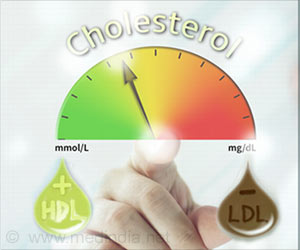Cholesterol treatment guidelines from the American Heart Association and the American College of Cardiology have drawn concern from the medical community.

A commentary published in The Lancet following the guidelines'' release suggested that the new formulas predicted that too many people would have a heart attack or stroke. According to the guidelines, it was recommended that doctors prescribe the cholesterol-lowering therapy statins to all patients who were considered high-risk by the AHA/ACC risk equations.
If the equations were overestimating risk, patients could be put on statins when they do not need to be treated, costing them money and exposure to potential side effects. Additionally, since they are not high-risk, they would not have an offsetting risk reduction of heart attack and stroke.
Using data from the Reasons for Geographic And Racial Differences in Stroke, or REGARDS, study, 10,997 people who were not taking statins, did not have a history of heart attack or stroke, and did not have diabetes, were studied to validate the formula. At baseline in 2003-2007, participants underwent a physical examination that allowed investigators to use the AHA/ACC formulas to estimate each person''s risk for having a heart attack in the next 10 years.
Participants in REGARDS have been followed for heart attacks and strokes. Using the data collected, researchers compared heart attack and stroke rates observed in the REGARDS study participants to those predicted by the formulas.
"The formulas worked very well - the rates of heart attack and stroke observed were very similar to those predicted by the formulas," said Paul Muntner, Ph.D., professor in the UAB Department of Epidemiology and lead study author. "Additionally, participants who were predicted to have high risk were the ones most likely to have heart attacks and strokes, while those who were predicted to have a low risk had very low incidence of heart attacks or strokes."
Advertisement
"We think this is very important because there are millions of patients who may benefit from taking statins, and doctors need to identify these patients while not prescribing treatment for patients who may receive little benefit," Muntner said.
Advertisement
"We hope that showing that the formula works in a large nationwide group of adults will lead doctors to use it," Muntner said. "In turn, this could lead to higher rates of appropriate use of statins and reduction in heart attack and stroke risk."
While the REGARDS study is ongoing, Muntner says follow-up at the time of their analyses was limited to five years. They plan to perform additional analyses once longer follow-up of participants becomes available.
About UAB
Known for its innovative and interdisciplinary approach to education at both the graduate and undergraduate levels, the University of Alabama at Birmingham is an internationally renowned research university and academic medical center and the state of Alabama''s largest employer, with some 23,000 employees and an economic impact exceeding $5 billion annually on the state. The five pillars of UAB''s mission deliver knowledge that will change your world: the education of students, who are exposed to multidisciplinary learning and a new world of diversity; research, the creation of new knowledge; patient care, the outcome of ‘bench-to-bedside'' translational knowledge; service to the community at home and around the globe, from free clinics in local neighborhoods to the transformational experience of the arts; and the economic development of Birmingham and Alabama. Learn more at www.uab.edu.
EDITOR''S NOTE: The University of Alabama at Birmingham is a separate, independent institution from the University of Alabama, which is located in Tuscaloosa. Please use University of Alabama at Birmingham on first reference and UAB on all subsequent references.
Source-Newswise













